While some fairy kings are literary, others belong to folklore, and some remain as historical figures or gods. In Scotland, the Fairy King and Queen are recognised by these titles according to ancient law! The goal of this article is to explore the different rulers, and hopefully, readers will chime in with their own opinion on who deserves to be king of the fairies.
A Famous Song
If you have a love of traditional Irish music, you’ve probably heard at least one rendition of ‘King of the Fairies.' It has been performed by such luminaries as the Dubliners and the Irish Rovers, but it’s a much older tune than you might realise. It’s now believed that the song originally comes from an 18th-century Jacobite tune called ‘Bonny Charlie’ which celebrated the rebellious Scottish prince. There is a British version of the song called ‘King William of Orange.'

One of the most famous Irish folk bands, the Dubliners, played a version of King of the Fairies
John Edward Pigot collected the set dance in Ireland in 1840 where it was published as ‘Your old wig is the love of my heart’ in Old Irish Folk and Music Songs in 1909. According to folklore, ‘King of the Fairies’ is a song to summon the fairy king. If you play it three times in a row during a party, the king must appear. However, the king will decide whether or not he likes the shindig; if he does, he joins in the revelry. If he doesn’t, he will cause mayhem.
Modern day renditions of the song come from a poem called The Fairies which was written by William Allingham and published in 1850. As the poet mentions a ‘green jacket, red cap,' one could suggest that he is referring to leprechauns. Allingham also writes that the fairy king is ‘old and gray’ and has ‘lost his wits.' He also says that the wee men will place sharp thorns on a human’s bed if they dare dig up the thorn trees planted by the fairies.
The Irish Rovers first played ‘King of the Fairies’ on their album The Life of the Rover in 1969 whereas the Dubliners released a live version of the song in 1965. While the lyrics of both songs are slightly different, both sets come from Allingham’s poem.
Who Are The Different Fairy Kings?
There are several contenders for the title ‘King of the Fairies’ so let’s look at them;
Finvarra
Also spelled ‘Fin Bheara’ or ‘Finnbhear,' Finvarra was the Connacht King of the Fairies and also the King of the Daoine Sidhe in Irish folklore. There are also some tales where he is described as King of the Dead. Finvarra lived with his wife Oona in Knockmaa, County Galway and had a penchant for beautiful mortal women.

Finvarra was the Connacht King of the Fairies and also the King of the Daoine Sidhe in Irish folklore.
When the Milesians arrived in Ireland and forced most of the Tuatha De Danann to flee, Finvarra stayed behind and led the remaining members of the tribe, known as the Daoine Sidhe. According to legend, Finvarra negotiated a truce with the Milesians which allowed him and his people to stay in Ireland as long as they agreed to live underground. They built great cities under the king’s leadership and began to have an impact on the humans above ground. Eventually, no human would build a structure without the permission of the king of the fairies.
Ailill
According to Irish folklore, Ailill was a Milesian Fairy King of Leinster although he could also lay claim to the Connacht throne due to his mother’s bloodline. Ailill married the sovereign of Ireland, Medbh, and paid a huge dowry for the privilege. It included 21 slaves, silver equivalent to the weight of his shield arm, the clothing of a dozen men and a wedding band of red gold as wide as his face.
He is described as being extremely tall with a reddish skin and a golden diadem atop his head. Interestingly, there are a number of kings named Ailill in Irish history including:
- - Ailill Cruitire: 7th Century King of Brega in north Dublin.
- - Ailill mac Dunlainge: 9th Century King of Leinster.
- - Ailill mac Faelain: 8th Century King of Osraige in modern day Kilkenny and Laois.
Iubdan
This Fairy King of Ulster is described as having a diminutive stature; he is also known for being extremely boastful. Iubdan was the leader of a tiny people known as the Faylinn (also known as the Wee Folk) who were apparently only a few inches tall. The Fairy Queen was called Bebo, and because the Faylinn was so small, they believed the population of Ireland was actually inhabited by giants!
As Iubdan had a habit of proclaiming his greatness, the poet of the court became fed up with his attitude and told the royal couple about Ulster, the land of Giants and their porridge. The arrogant Iubdan was keen to prove his greatness to Fergus mac Leda, the King of Ulster, so he decided to travel north.
His goal was to sneak into the giant’s porridge and eat some without being seen. The foolish Fairy King and his Queen became trapped when they fell into the giant bowl of porridge. The Giants took the pair to Fergus who kept them as his prisoners. He eventually released them in exchange for the fairy king’s prized possession, a pair of magical shoes that allowed the wearer to walk on water. One wonders if Jonathan Swift based the land of Lilliput and its vainglorious inhabitants on the Faylinn in Gulliver’s Travels.
Midhir
Also spelled ‘Midir,' this Fairy King was the son of the Dagda and is an important figure in the Mythological Cycle of early Irish literature. After the Tuatha De Danann was forced underground by the Milesians, Midhir lived in the sidh of Bri Leith; modern day Ardagh Hill in County Longford. The name might come from midithir, the Irish word for a judge.

Midhir and Etain Sculpture at Ardagh Heritage Centre in County Longford, Ireland.
Lady Gregory describes him in Gods and Fighting Men which was published in 1904. She wrote about his long green cloak, a brooch of gold, a shirt woven with gold, a spear with rings of gold and several other golden ornaments. Midhir was married to Fuamnach but left her when he fell in love with Etain. The jealous Fuamnach turned Etain into a fly and sent her away from Ireland’s fairy hills.
Poor Etain was blown across the country for seven years until she was finally flown back and landed in Fuamnach’s wine goblet! The queen swallowed the unfortunate fly, but after nine months inside the queen’s belly, Etain was reborn, grew into a beautiful woman and married the King of Munster, Eochaid.
When Midhir discovered the whereabouts of the love of his life, he travelled to Munster and challenged Eochaid to three games of chess. While he lost the first two, he won the final game and asked for Etain as his prize. Eochaid was reluctant but allowed one kiss. However, Midhir flew away with Etain; the two transformed into white swans joined by a golden chain. Eochaid and his men pursued the duo to the fairy hills in Ulster and dug into them. Eventually, Eochaid regained his wife and the power of the Tuatha De Danann quickly dwindled.
Oberon
Famously known as the king of the fairies in William Shakespeare’s A Midnight Summer’s Dream, Oberon is married to Titania, the Queen of the Fairies. The couple quarrel because Oberon wants to raise a Changeling child as his henchman, but Titania wants to raise the child as her own. The two fairies are so powerful that their arguments affect the weather.
When Oberon tries to trick his wife, it backfires, and she falls in love with someone else. He eventually reverses the spell and manages to convince Titania that she merely had a bad dream.
The tale of Oberon is older than Shakespeare however as he appears in a 13th-century ballad called Huon de Bordeaux. In the ballad, Oberon is a handsome elf who helps the son of the Seguin count of Bordeaux. There is a possibility that the tale is based on a Count of Bordeaux who died fighting the Normans in the 9th century. He possesses a magic cup that is always full when held by virtuous people and in the fantasy; Oberon is the child of Morgan Le Fay and Julius Caesar!
Final Words
As you can see, there is no single King of the Fairies. In fact, there is more than one version of the famous song! So who is your favourite king? Do you favour the quarrelsome Oberon, the foolish Iubdan, the lovesick Midhir, the wealthy Ailill or the brave Finvarra?


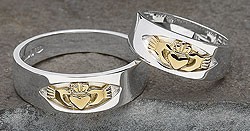
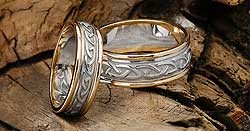
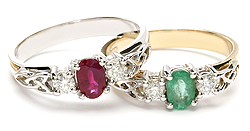
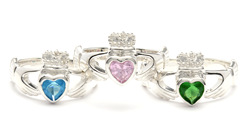
 Trinity Verlobungsring
Trinity Verlobungsring 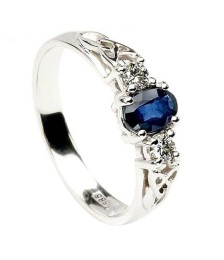 Saphir-Verlobungsring
Saphir-Verlobungsring  Smaragd Verlobungsring
Smaragd Verlobungsring 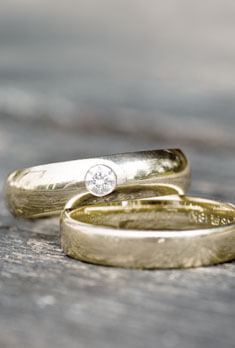

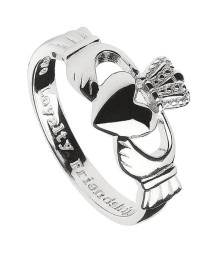 Herren Claddagh Ring
Herren Claddagh Ring 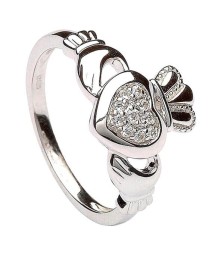 Claddagh Ring pflaster
Claddagh Ring pflaster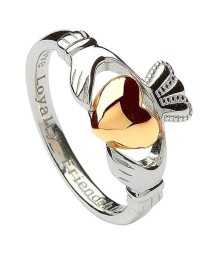 Claddagh Ring mit Gold Herz
Claddagh Ring mit Gold Herz 